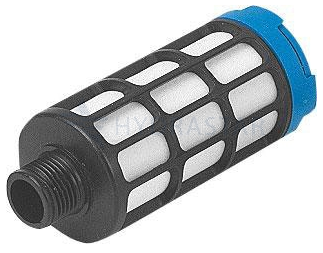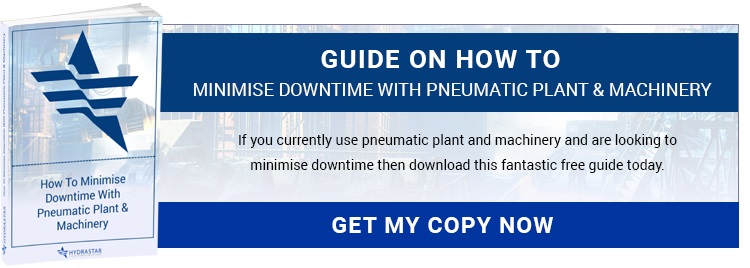Pneumatic silencers are also known as ‘mufflers’ and ‘pneumatic exhausts’. They reduce the noise of compressed air. However, there is a lot of confusion within the industry regarding the necessity of pneumatic silencers, what they do, and what to look for when making an investment.
The Sound Of Silence: Pressurised Air
Many machines use pressurised air as a highly efficient method of energy transfer. However, when pressurised air is released, everybody knows about it: the dB(A) can be up to 100. A jet engine is 140dB(A).
The noise is not related to the size of the nozzle or tube. Rather, air velocity is key. This means that changing the size of the equipment makes virtually no difference. Studies suggest that halving the nozzle area results in a meagre 3 dB(A) reduction in noise.
In other words, where there is compressed air, there is – inevitably – lots of sound, regardless of the size of the equipment. Silencers can be used to instigate a controlled pressure drop, reducing the velocity of the air and, consequently, the decibels.
Is A Pneumatic Silencer Necessary In All Systems?
Silencers are not critical for the productivity of the equipment. In fact, substandard pneumatic silencers contribute to downtime because they can block the airflow. However, noise control is inscribed in various parts of UK legislation. These include:
- The Control of Noise at Work Regulations 2005
- The Control of Noise (Code of Practice for Construction and Open Sites) Order 2015
- The Noise Emission in the Environment by Equipment for use Outdoors Regulations 2015
- The Environmental Noise Regulations 2010
Failure to adhere to regulations, guidelines, and codes of practice can result in fines and potential hearing damage for machine operators. There are multiple examples of successful court cases brought against construction companies that did not use pneumatic silencers.
What Should I Look For In A Pneumatic Silencer?
The main problem with silencers is that pollution in the piping causes clogs. There is very little that can be done about this. Oil is used as a lubricant to enhance the pressurised airflow, and small holes in the exhaust are necessary for controlled reduction of pressure. The combination of contaminants and narrow filters is a design challenge.
Therefore, the Health and Safety Executive (HSE) states that in order to minimise downtime, the quality of the silencer is vital. It offers the following guidance for choosing the best silencer:
1. Noise Reduction
Expect a reduction of between 18 dB(A) and 25 dB(A).
2. Flow Rate
The silencer should not reduce the designed flow rate. Crucially, a good pneumatic silencer will maintain the flow rate even on polluted systems.
3. Construction
Pneumatic silencers have to be strong enough to withstand accidental impacts.
4. Maintenance
According to the HSE, this is the most important feature. As silencers are non-essential to the working of the machinery, they tend to be neglected until they reach a critical phase (i.e., when they are so clogged that they reduce the output pressure). Silencers that can be maintained with minimal effort are therefore crucial.
Festo: The Best Silencers On The Market
At Hydrastar, we recommend Festo pneumatic silencers. Combining legislation-friendly noise reduction, reliable construction, and the requirement for minimal maintenance, they are a guaranteed solution for any pneumatic silencing need. To learn more about how high-quality silencers can help to minimise downtime, get in touch either via email: sales@hydra-star.co.uk and or phone: 01353 721704.



